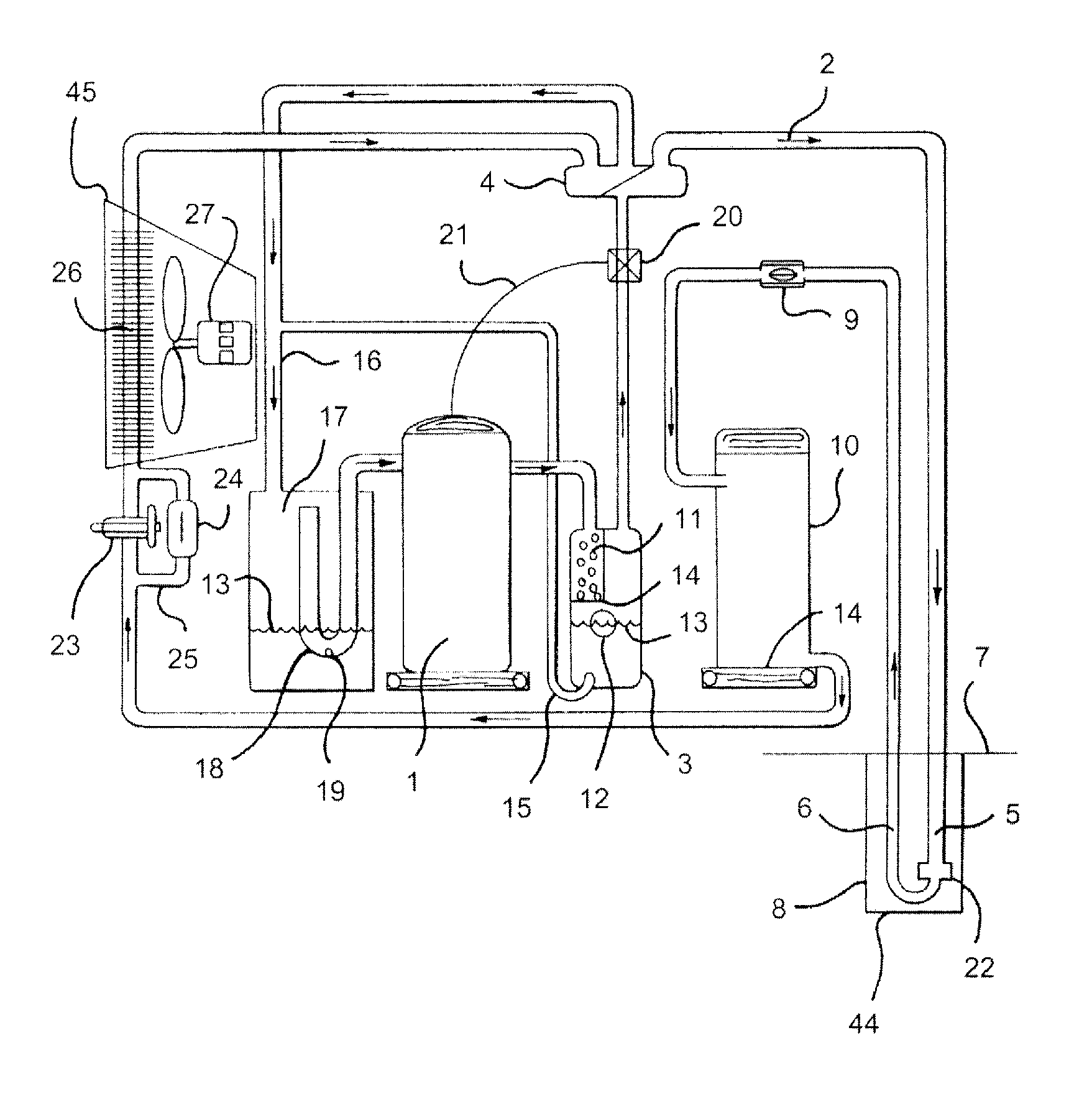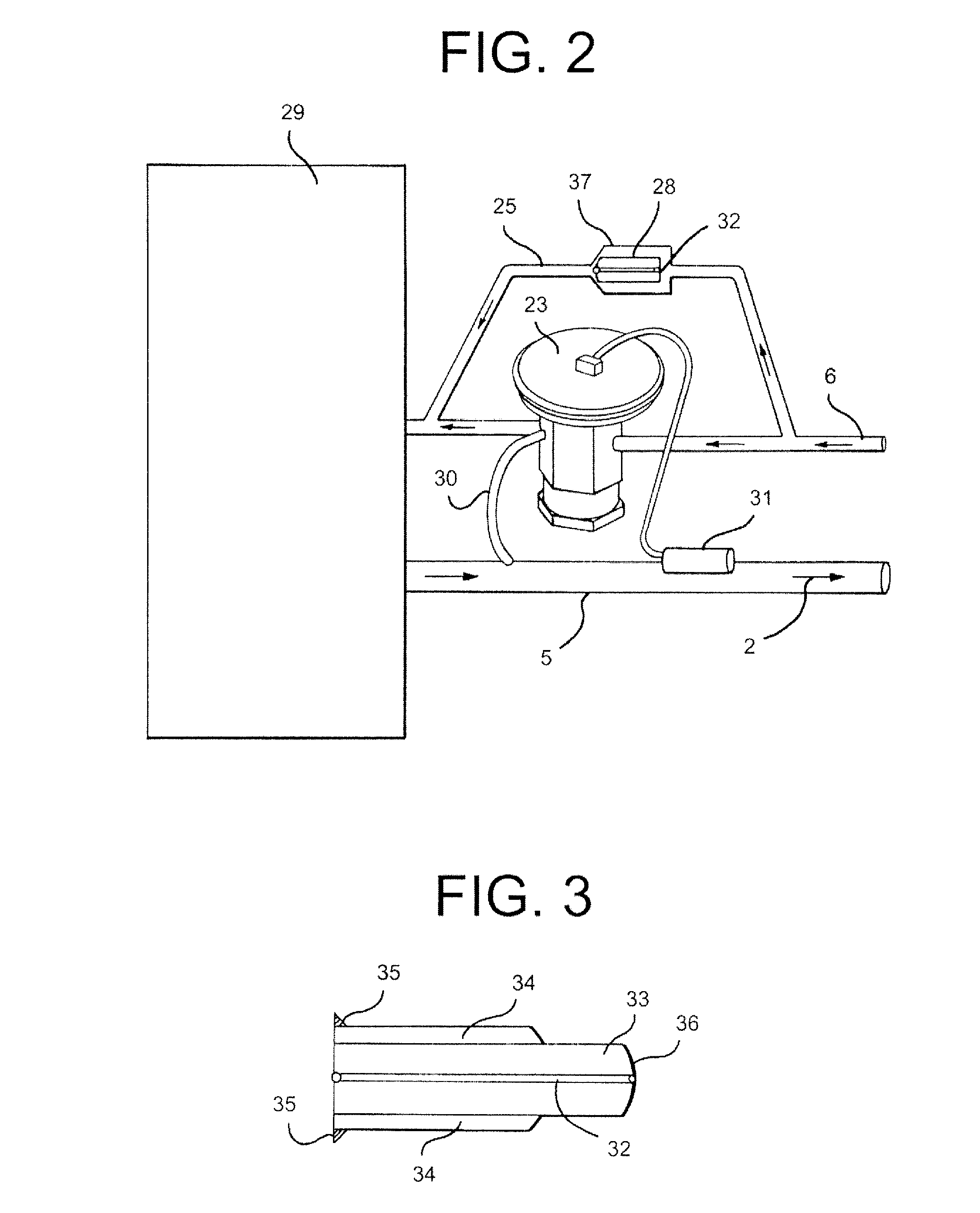Multi-Faceted Designs for a Direct Exchange Geothermal Heating/Cooling System
a geothermal heating/cooling system and geothermal direct exchange technology, applied in the direction of refrigeration machines, compressors with reversible cycles, refrigeration safety arrangements, etc., can solve the problems of compressor damage, dx system with vertically oriented geothermal heat exchange tubing, and dx system with dx system operation efficiency levels that are not acceptable, so as to achieve the highest possible operational efficiency, reduce overall system operation efficiency levels, and enhance heat transfer
- Summary
- Abstract
- Description
- Claims
- Application Information
AI Technical Summary
Benefits of technology
Problems solved by technology
Method used
Image
Examples
Embodiment Construction
[0057]The following detailed description is of the best presently contemplated mode of carrying out the claimed subject matter. The description is not intended in a limiting sense, and is made solely for the purpose of illustrating the general principles of the disclosure. The various features and advantages of this disclosure may be more readily understood with reference to the following detailed description taken in conjunction with the accompanying drawings.
[0058]Referring now to the drawings in detail, where like numerals refer to like parts or elements, FIG. 1 shows a side view, not drawn to scale, of a DX heat pump system operating in the cooling mode. The system includes a compressor 1, with a hot gas vapor refrigerant (not shown except for arrows 2 indicating the direction of the refrigerant flow) traveling from the compressor 1 into an oil separator 3. The compressor 1 is designed with an operating BTU capacity of between 80% and 95% of the maximum calculated heating / coolin...
PUM
 Login to View More
Login to View More Abstract
Description
Claims
Application Information
 Login to View More
Login to View More - R&D
- Intellectual Property
- Life Sciences
- Materials
- Tech Scout
- Unparalleled Data Quality
- Higher Quality Content
- 60% Fewer Hallucinations
Browse by: Latest US Patents, China's latest patents, Technical Efficacy Thesaurus, Application Domain, Technology Topic, Popular Technical Reports.
© 2025 PatSnap. All rights reserved.Legal|Privacy policy|Modern Slavery Act Transparency Statement|Sitemap|About US| Contact US: help@patsnap.com



